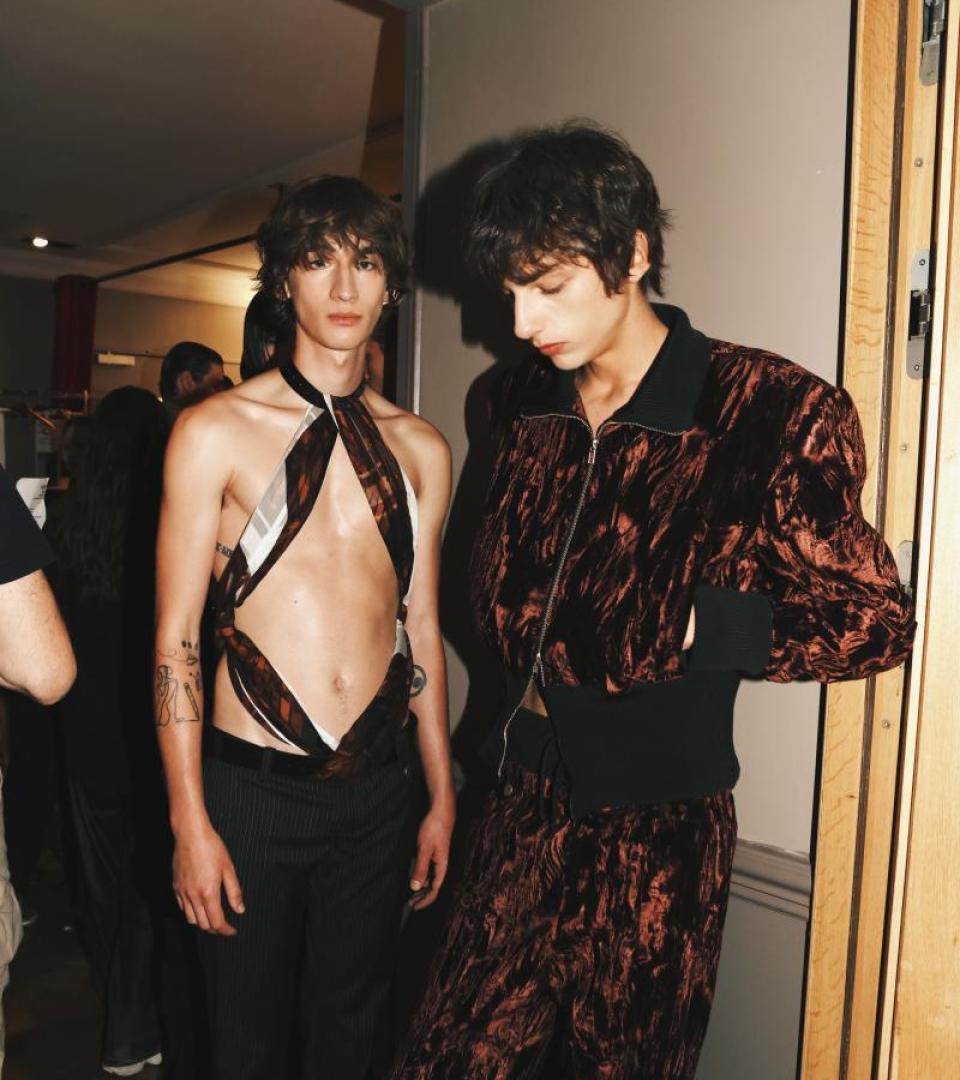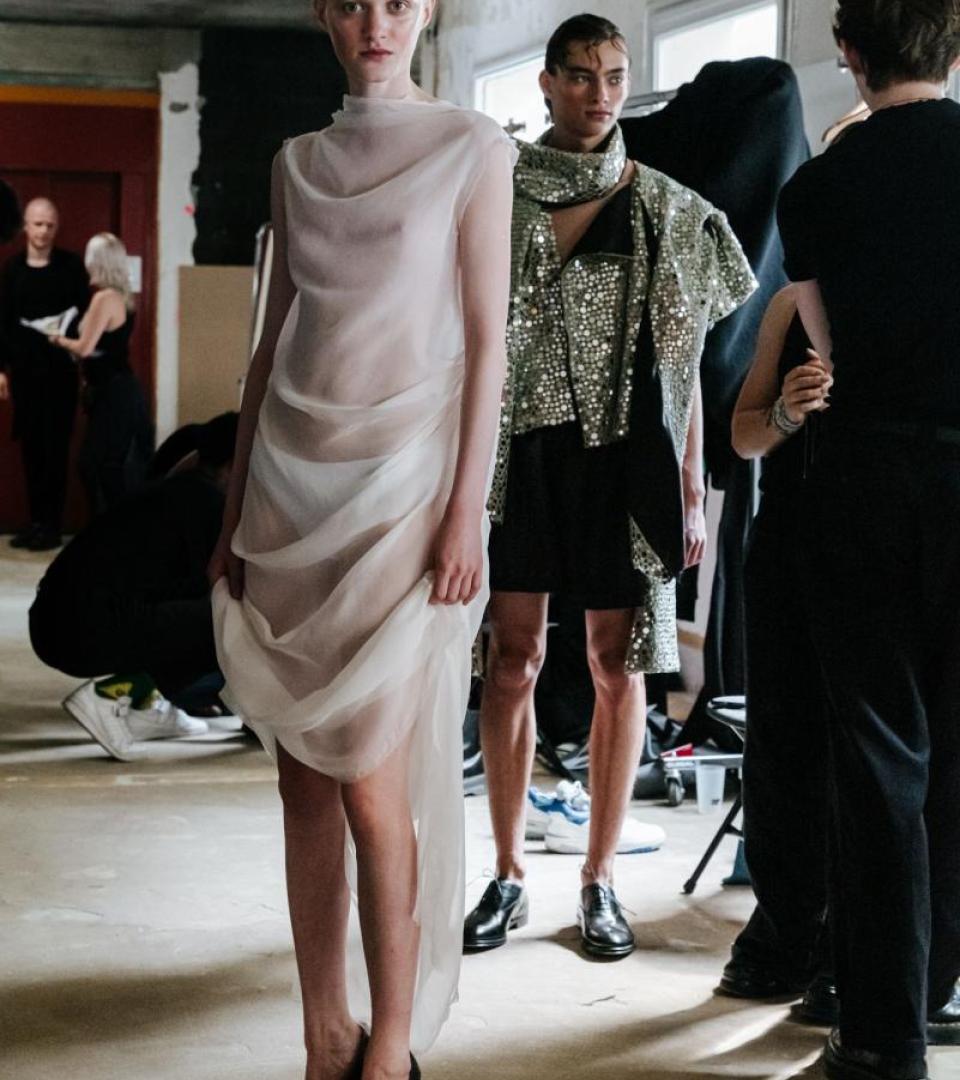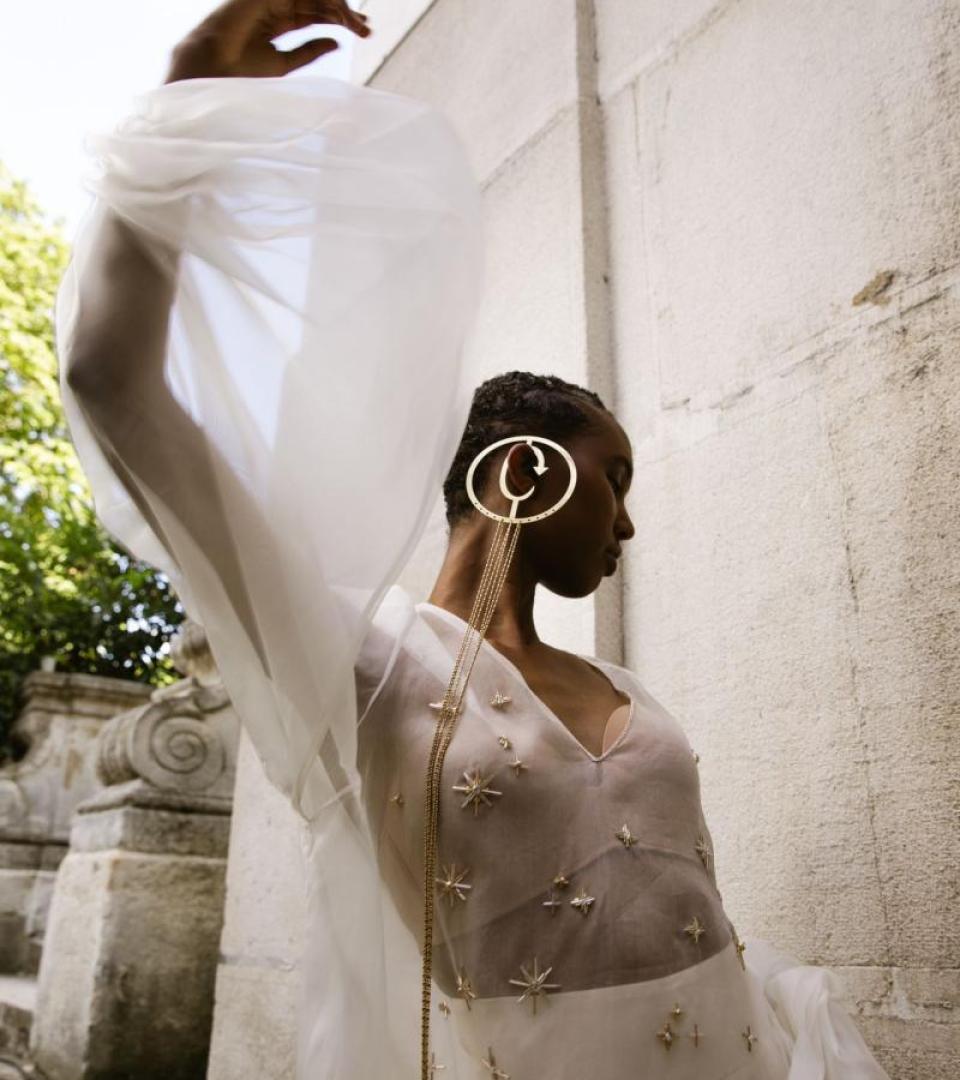The Aura of Rahul Mishra
By Paul McLauchlan
The Indian designer Rahul Mishra set himself a challenging task for his Fall-Winter 2024 Haute Couture collection: encapsulating the elusive concept of one’s aura. It’s something he’s considered as an inspiration, but he waited until now for the right time, the right frame of mind to execute a vision philosophising about the spirit. At the Réfectoire des Cordeliers, a procession of divine beings sashayed through an auditorium revealing his interpretation of an aura as a physical entity. There were suggestions of Hindu deities and patterns that mapped the flow of energy. Everything was painstakingly labored over, from initial inspiration to the outcome.
Models embody trimurti, the trinity of supreme divinity in Hinduism, which represents creation, preservation, and destruction. An all-black dress features two sides with the model forming the centrepiece. Another interpretation: steel wire erects a panel of gossamer light tulle that is hand-painted to represent a face before being hand-embroidered with single-thread embroidery by skilled artisans. Glass beads and sequins mirror an infrared map of the body with black radiating into white from the body’s core. To conjure something that exists solely beyond our imagination, the designer sought to simplify his palette by stripping things back to black, in contrast to his typically polychromatic creations. He recalled the works of Vincent Van Gogh and Claude Monet as lessons in telegraphing the intangibility of human emotions. On a visual level, it explains a dress built from painterly brushstrokes of the female form.
“With this collection, we are trying to limit aura to a physical being. It is something that exists outside of our imagination, so we started playing with different dimensions and ideas behind this [to explain it to the viewer],” said Mishra, on a video call from his office in New Delhi, India, where he was finalising the collection before travelling to Paris.
What was the starting point for this collection?
There is a beautiful quote in Hindu scripture that says, “The soul never takes birth and never dies at any time, nor does it come into being again when the body is created.” It led me to think about eternity and infinity when we have no idea of when we started or when we ended. As human beings, we have a physical dimension and there’s an aura, which is like an extra dimension. This was very difficult to achieve through clothing. But fashion is like an aura: when you wear something it creates a personality. We wanted to create a visible force of aura. We started to think about how we can create a texture that is more tactile and more three-dimensional.
How did you communicate your inspiration through clothing?
First, we started thinking about the human body. Then, we thought about aura, the extra dimension. It’s like seeing something through an infrared camera where you can see different layers of heat emitting from the body, so the body somehow moves out of the physical dimension that is visible to us and into something more. We looked at artworks where you could see how the flow of energy is emitted from a body; how it has no starting point and no ending point.
We looked at faces as a symbolic representation of one’s aura. In Hindu mythology, Lord Bhrama has four heads. It is said that he can see the past, the present, and the future at the same time. There is also a demon king called Ravana, [who could assume the form of anything that he desired]. We started creating these dimensions where it looks like the model is wearing multiple heads at the same time. Similarly, we started painting some heads on tulle that are attached to metal wires. They are then hand-embroidered. It shows how a person with a strong aura can look at the past, the present, and the future at once.
Do you think artificial intelligence poses a threat to haute couture?
As time passes, there is so much more mechanisation that AI will probably change the way the world looks beyond recognition in the coming years. However, haute couture has never been as valuable as it is today, and AI and technology will only create more value for it. Couture is completed by hand, to precision. It’s not inch by inch or millimetre by millimetre but almost nanometre by nanometre.
Furthermore, when you look at tomorrow’s world, where employment will be a huge focus, especially in a country like India, couture becomes very important as it can provide so much employment. We work with a team of almost 1,000 artisans and craftspeople. Last season, one of the men who worked on the embroidery in the collection travelled to Paris for the show. He has only ever completed primary education but today, his daughter studies in London. For craftspeople in India, couture allows them to dream. They can take care of their kids and allow them to live their dreams through the art and beauty that they create. Couture enables them and empowers them, and their families. In that way, couture is the only thing that can create fashion beyond vanity.
This interview has been lightly edited.



